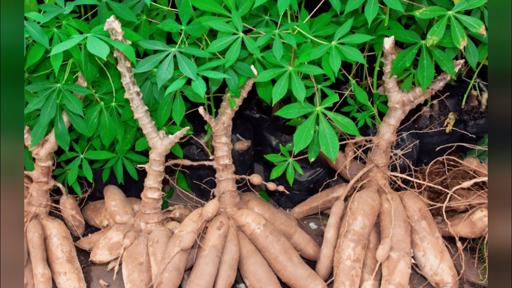Cassava
Manihot esculenta
Also known as: Yuca, Manioc

Growing Information
Growth Habit: Shrub
Climate Requirements: Prefers tropical climates with temperatures between 25–29°C and a well-defined dry season.
Soil Requirements: Well-drained, sandy loam with a pH of 5.5–7.0.
Water Requirements: Requires moderate watering during the growing period, but can tolerate drought once established.
Planting Instructions: Planted using stem cuttings spaced 1 meter apart in rows, with planting depth of 10–15 cm.
Harvesting Information: Harvested after 8–24 months depending on the variety, when the roots are mature.
Characteristics & Benefits
Plant Characteristics: Cassava is a woody shrub that produces tuberous roots that are starchy and widely used in food and industry.
Nutrient Content: Rich in carbohydrates, vitamin C, and some minerals like calcium and potassium.
Health Benefits: Provides high energy, promotes digestive health, and supports the immune system.
Yield Information: Average yield is 15–40 tons per hectare.
Uses & Distribution
Culinary Uses: Used in cooking, frying, or grinding into flour for baking. Also used in tapioca production.
Industrial Uses: Used in the production of biofuels, starches, and adhesives.
Native Range: South America, particularly Brazil.
Current Distribution: Widely grown in Africa, Asia, and Latin America, with major producers being Nigeria, Thailand, and Indonesia.
Pest & Disease Management
Common Pests: Cassava mealybug, aphids, and whiteflies.
Diseases: Cassava mosaic disease, bacterial blight, and root rot.
IPM Practices: Use resistant varieties, crop rotation, and proper field sanitation.
Market Value: $150.00
Research & References
Studies and Articles: Research on high-yielding and disease-resistant cassava varieties.
Bibliography: Cassava Cultivation and Processing, 2023.
Comments
Add CommentNo comments yet. Be the first to comment!